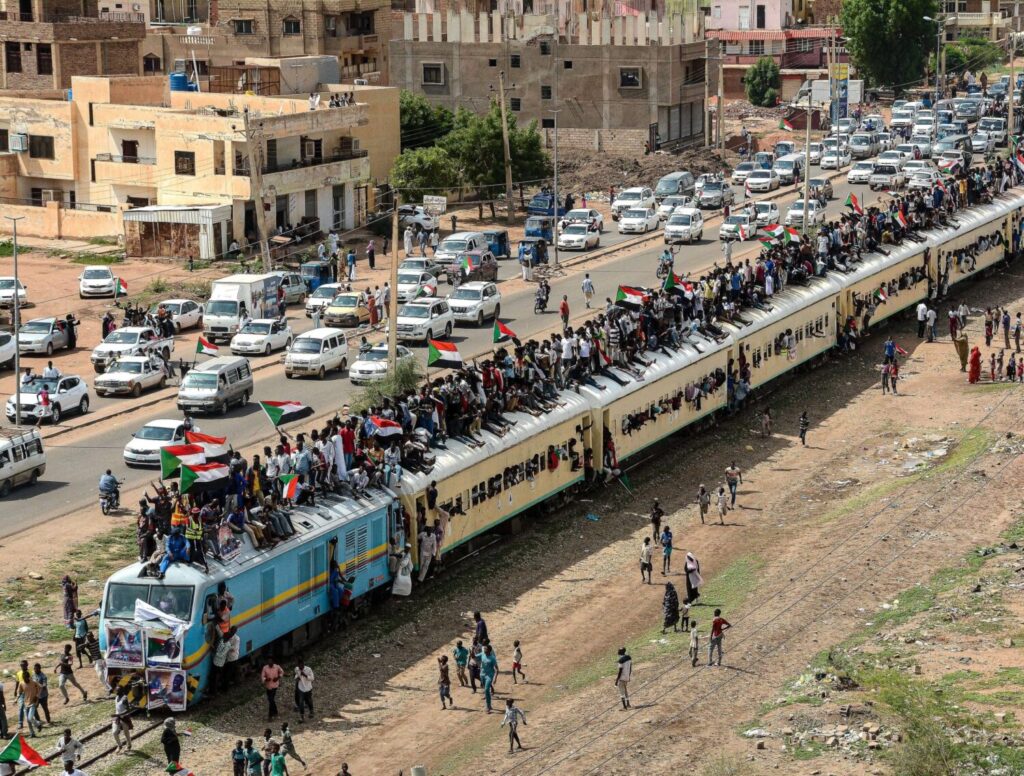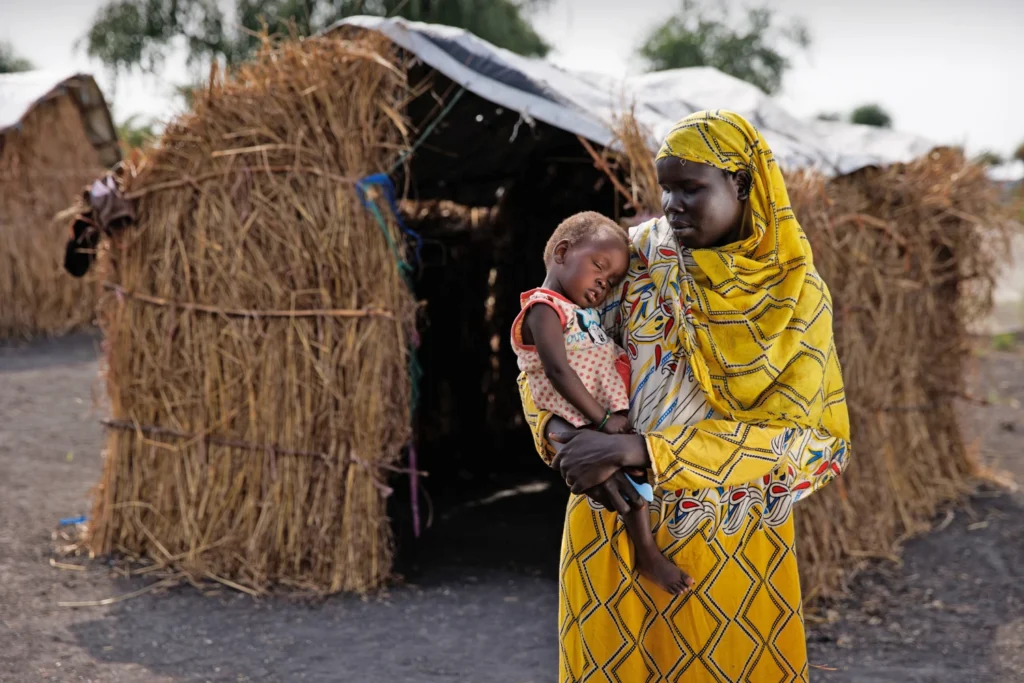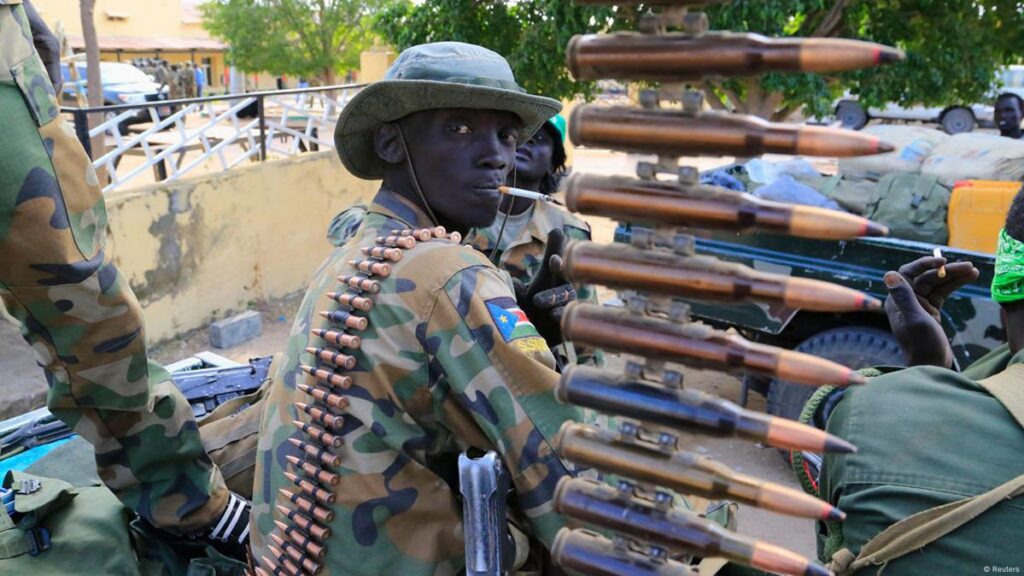Introduction
Sudan’s ongoing civil war, which erupted on April 15, 2023, has plunged the country into one of the most devastating humanitarian crises in modern history. What began as a power struggle between two military factions has spiraled into widespread violence, ethnic massacres, famine, and mass displacement.
As of November 2025, the conflict shows no signs of abating, with fighting intensifying in key regions like Darfur and Khartoum. Tens of thousands have been killed, millions displaced, and the economy lies in ruins. This article examines the war’s origins, key combatants, historical context, human cost, and economic devastation.
Who Is Fighting?
The war pits the Sudanese Armed Forces (SAF), the country’s regular military, against the Rapid Support Forces (RSF), a powerful paramilitary group. The SAF, led by General Abdel Fattah al-Burhan, represents the remnants of Sudan’s traditional army and controls much of the east, including the provisional capital of Port Sudan. Al-Burhan, who seized power in a 2021 coup alongside the RSF’s leader, has positioned the SAF as the defender of national unity and civilian rule, though it has allied with Islamist militias and Darfuri rebel factions like elements of the Sudan Liberation Movement (SLM) and Justice and Equality Movement (JEM).Opposing them is the RSF, commanded by General Mohamed Hamdan Dagalo, known as Hemedti.

The RSF evolved from the notorious Janjaweed militias, infamous for atrocities during the 2003-2020 Darfur genocide, and is predominantly Arab-led. It controls most of western Sudan, including Darfur, and has expanded into Kordofan and parts of Khartoum. The RSF has received backing from the United Arab Emirates (UAE), accused by Sudan of supplying arms and mercenaries, as well as from Libyan warlord Khalifa Haftar. Smaller groups, such as the SPLM-North (al-Hilu faction) attacking SAF positions in the south and the Tamazuj movement aligning with the RSF, have joined the fray, turning the conflict into a multi-factional war.
The root of the fighting lies in a failed power-sharing deal after the 2019 ousting of dictator Omar al-Bashir. Tensions over integrating the RSF into the SAF—particularly timelines and command structure—boiled over in 2023, with both sides accusing the other of striking first in Khartoum. Foreign powers have exacerbated the divide: Egypt and Saudi Arabia support the SAF, while the UAE and Russia (via the Wagner Group, now Africa Corps) aid the RSF, turning Sudan into a proxy battleground.
A Brief History of Sudan: Formation and Independence
Sudan’s history is a tapestry of ancient kingdoms, colonial exploitation, and post-independence strife, shaping the ethnic and regional divides fueling today’s war.The region now known as Sudan has been inhabited for millennia, home to the Kingdom of Kush (c. 1070 BCE–350 CE), a Nubian civilization that rivaled ancient Egypt, and later Christian Nubian kingdoms until the 14th century. Arab migrations in the 15th-16th centuries introduced Islam to the north, while the south retained animist and Christian influences. In 1821, Egyptian forces under Muhammad Ali invaded, establishing Turco-Egyptian rule that lasted until a Mahdist revolt in 1881 overthrew it, creating an independent Islamic state until British reconquest in 1898.From 1899 to 1956, Sudan was governed as an Anglo-Egyptian Condominium, a joint British-Egyptian administration that treated north and south separately: the north Arabized and Islamized, the south isolated under “closed district” policies to prevent northern influence.

This “Southern Policy” sowed seeds of division, as southerners were denied education and development while northern elites thrived.Nationalism surged post-World War II. In 1953, Britain and Egypt agreed to Sudanese self-determination. On December 19, 1955, Sudan’s parliament, led by Ismail al-Azhari of the National Unionist Party, declared independence, effective January 1, 1956—uniting north and south without resolving religious, ethnic, or economic disparities. Al-Azhari, initially favoring union with Egypt, pivoted to full sovereignty amid southern unrest.Independence brought instability: a 1958 military coup, civilian unrest, and the First Civil War (1955-1972), sparked by southern mutinies over northern dominance, killing 500,000.
The 1972 Addis Ababa Accord granted southern autonomy under Jaafar Nimeiri, but he imposed Sharia law in 1983, igniting the Second Civil War (1983-2005), which claimed 2 million lives and displaced 4 million. The 2005 Comprehensive Peace Agreement ended it, leading to South Sudan’s independence in 2011.Post-2011 Sudan, under Omar al-Bashir (1989-2019), faced the Darfur genocide (2003-2020), killing 300,000 and displacing millions, with Janjaweed militias (RSF precursors) as perpetrators. Protests ousted Bashir in 2019, but a 2021 SAF-RSF coup derailed civilian transition, culminating in the 2023 war. Sudan’s formation as a unified state ignored its diversity—over 500 ethnic groups, vast deserts, fertile Nile valleys—breeding chronic conflict.
The Human Cost: How Many Killed and Displaced?
The war’s death toll is staggering but imprecise, hampered by restricted access, destroyed infrastructure, and underreporting of indirect deaths from famine, disease, and lack of healthcare. Direct combat fatalities reached 17,044 by May 2024. A May 2024 U.S. Senate hearing estimated 15,000-30,000 violent deaths but suggested the true figure, including indirect causes, could be 150,000—10-15 times higher.
A November 2024 London School of Hygiene & Tropical Medicine study pegged over 61,000 deaths in Khartoum State alone from April 2023 to June 2024—a 50% rise in pre-war mortality rates—due to violence, starvation, and disease. In Darfur, ethnic clashes in Geneina killed at least 1,100 in April 2023, with Masalit leaders claiming 5,000 deaths and 8,000 wounded. By June 2025, researchers estimated at least 62,000 total deaths nationwide, warning the figure could be far higher. The U.S. State Department accused the RSF of genocide in Darfur in January 2025, echoing 2003 horrors.

Displacement is the world’s largest: over 13-14 million people—more than a quarter of Sudan’s 51 million population—fled their homes since April 2023, with 10.8 million internally displaced and 4 million as refugees in Chad, Egypt, and South Sudan by September 2025. Khartoum saw 1 million returns in early 2025, only to face renewed fighting. Over 50,000 remain missing.
The humanitarian crisis is apocalyptic: 25-30 million face acute hunger, with famine declared in North Darfur’s Zamzam camp (635,000 affected) and el-Fasher by August 2025. Cholera, dengue, and malnutrition kill thousands; 14 of 17 million school-aged children are out of school. Sexual violence is rampant, with over 12 million women and girls needing protection.
UN appeals for $4.2 billion in 2025 are only 27% funded.
Economic Impact of the War
The war has obliterated Sudan’s fragile economy, contracting GDP by 29.4% in 2023 and 14% in 2024—one of the sharpest declines globally. Projections for 2025 vary: a moderate scenario sees a further 7% drop, totaling 32-42% contraction from 2022 levels (from $56.3 billion to $32.4 billion), while extreme estimates warn of 48% cumulative loss by year-end.
Economic losses could reach $15 billion annually, pushing poverty to 39.3 million (80% of the population), up 1.8 million from pre-war figures.Key sectors are crippled.
Agriculture, employing 40% of workers, saw cereal production fall 46% below 2023 levels and 40% below average, as fighting razed farms in Gezira (Sudan’s breadbasket) and Darfur.

Food prices doubled, with staple grains soaring further; 28 million across Sudan and neighbors face hunger. Industry and services collapsed in Khartoum, the economic hub, with factories looted, banks shuttered, and trade routes severed. Exports of gold, sesame, and gum arabic—Sudan’s lifelines—plummeted due to smuggling and blockades.Inflation hit triple digits, unemployment soared to 40% among youth, and cash shortages triggered black markets.
The banking system buckled, with nonperforming loans exceeding 10%. Regional spillovers hit neighbors: Ethiopia and Egypt face higher transport costs, Chad and South Sudan strain under refugee burdens. Recovery hinges on peace, but prolonged conflict risks permanent deindustrialization and food dependency.
Who Are the Weapons Suppliers?
Foreign powers treat Sudan as a proxy arena, supplying arms to sustain allies amid gold-for-weapons trades. The SAF receives state-backed aid from Russia, Iran, and Turkey; the RSF from the UAE and opportunistic brokers. Below is a breakdown:
| Supplier | Recipient | Key Supplies | Motivations & Notes |
|---|---|---|---|
| United Arab Emirates (UAE) | RSF | Drones, artillery, Nimr APCs (Edge Group); munitions via Bosaso Airport; Colombian mercenaries | Gold trade access; denies involvement but accused in UN/ICJ filings; central RSF provider per GIGA research. |
| Russia | SAF (some to RSF) | AK/SVD rifles (Kalashnikov Concern, Molot via Rostec); fuel, jet parts; Wagner/Africa Corps mercenaries | Gold mining rights; post-2019 exports ubiquitous; UN sanctions violations. |
| Iran | SAF | Drones, munitions, helicopter carrier attempts; fuel | Power projection; Red Sea influence; civilian misuse reported. |
| Turkey | SAF (some RSF contacts) | Blank guns/rounds (Özkursan, Voltran, Arca Defense); training at Camp TURKSOM (Somalia) | Horn of Africa expansion; mediation offers; Libya sanctions parallels. |
| China | Both (via UAE to RSF) | Rifles, “Long Wang 2” drones; small arms | Belt and Road security; post-2019 shipments; prefers stability. |
| Serbia, Yemen | Both | Ammunition, handguns | Opportunistic; UN-tracked diversions. |
| Kenya (Indirect) | RSF | Ammo crates (2024+ deliveries) | Broker networks; captured in Khartoum depots. |
| UK (Indirect via UAE) | RSF | Cummins engines in Nimr APCs | Export controls questioned; UN Security Council dossiers highlight. |
Egypt and Saudi Arabia provide non-lethal SAF support (e.g., logistics), denying arms roles. Libya’s Khalifa Haftar aids RSF via smuggling.

Ending inflows requires Quad-enforced embargoes and sanctions, as current mechanisms fail to stem the “constant flow” per Amnesty.
Conclusion: A Call for Urgent Action
Sudan’s war is not just a military clash but a man-made catastrophe erasing generations. With RSF advances in Darfur and SAF counteroffensives in the east, 2025 risks deeper fragmentation. International mediation—via the AU, IGAD, and “Quad” talks—has faltered, undermined by foreign meddling. Sanctions on arms suppliers and accountability for atrocities, including ICC probes, are essential.
Yet, the onus falls on al-Burhan and Hemedti to halt the carnage. For Sudan’s resilient people, peace remains the only path to rebuilding a nation forged in division but yearning for unity. The world must act before it is too late.

Comments